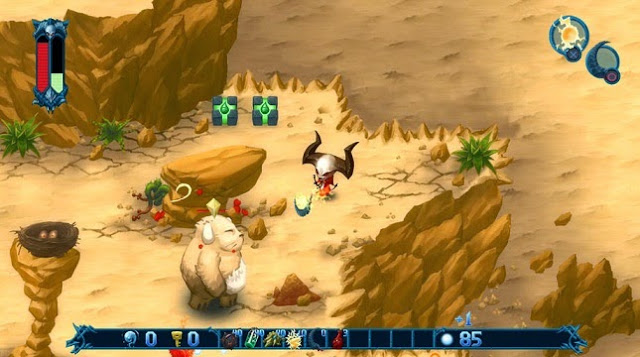

We’ll save you some time and cut to the chase: you will enjoy the first episode of Back to the Future: The Game if the following conditions are true… 1) you’ve seen the first Back to the Future movie, or at least have a general understanding of the basic plot points, and 2) you bear no ill will toward the franchise and are open to the idea of an all-new adventure with Marty and Doc played out in videogame form, and finally, 3) you are willing to forgive the episode for a few stereotypical “adventure-game” moments of confusion and frustration before you hit the final payoff. Developer Telltale’s newest episodic series has the biggest built-in fanbase yet, so we’re pleased to report that it does its source films justice. That said, the game still carries with it the shortcomings of the traditional point-and-click genre, and it’s too soon to say if the series will be able to maintain its momentum across five episodes.
Taking control of the red-vested, guitar-playing hero Marty McFly (voiced by an uncanny Michael J. Fox sound-alike), you’ll travel from the “present” - the 80s, of course - back in time to the 1930s, a time of underground speakeasies and pinstripe suit-wearing gangsters. As we’ve come to expect from Telltale, the script, voice acting and cartoony art style here produce plenty of grins and fit the tone of the films perfectly. With Bob Gale, the screenwriter for all three BttF films at the writing helm, dedicated fans can expect to catch clever nods to the series’ canon throughout the experience. The one and only Christopher Lloyd jumps right back into character as the raspy-voiced Doc Brown, while veteran voice actor James Arnold Taylor (Ratchet from Ratchet & Clank) does a great job portraying Doc from the 30s, a 17-year old, barely pubescent law clerk stuck under his father’s thumb who needs Marty’s help to unearth his secret scientific passions.
The first hour or so of the experience is great at pulling you in: walking around the charmingly-realized 1930s-era Hill Valley gives you the same initial sense of wonder that the films did; unfortunately, however, when the game gives you the most freedom to explore, it also slows the pace of the game significantly. You’re charged with delivering a subpoena to a gangster and getting some alcohol from a speakeasy to fuel young Doc Brown’s invention - these tasks are completed using the type of circuitous logic that adventure games are so often criticized for. You know, the use-the-dog-to-sniff-the-hat-to-uncover-the-key-to-unlock-the-door-to give-you-the-note-to-call-the-dentist-to-create-a-distraction kind of logic puzzle.




 How to Fix PlayStation 4 infinite restart loop issue
How to Fix PlayStation 4 infinite restart loop issue Star Ocean 5: Integrity and Faithlessness Wiki – Everything you need to know about the game .
Star Ocean 5: Integrity and Faithlessness Wiki – Everything you need to know about the game . Sequence 6 - A Thorne in the Side: Kill Lucy Thorne - Assassin's Creed Syndicate Walkthrough
Sequence 6 - A Thorne in the Side: Kill Lucy Thorne - Assassin's Creed Syndicate Walkthrough Life Is Strange Episode 5: How to Get All Optional Photo Achievements and Trophies
Life Is Strange Episode 5: How to Get All Optional Photo Achievements and Trophies What Are Science Fiction's Most Powerful Weapons?
What Are Science Fiction's Most Powerful Weapons?